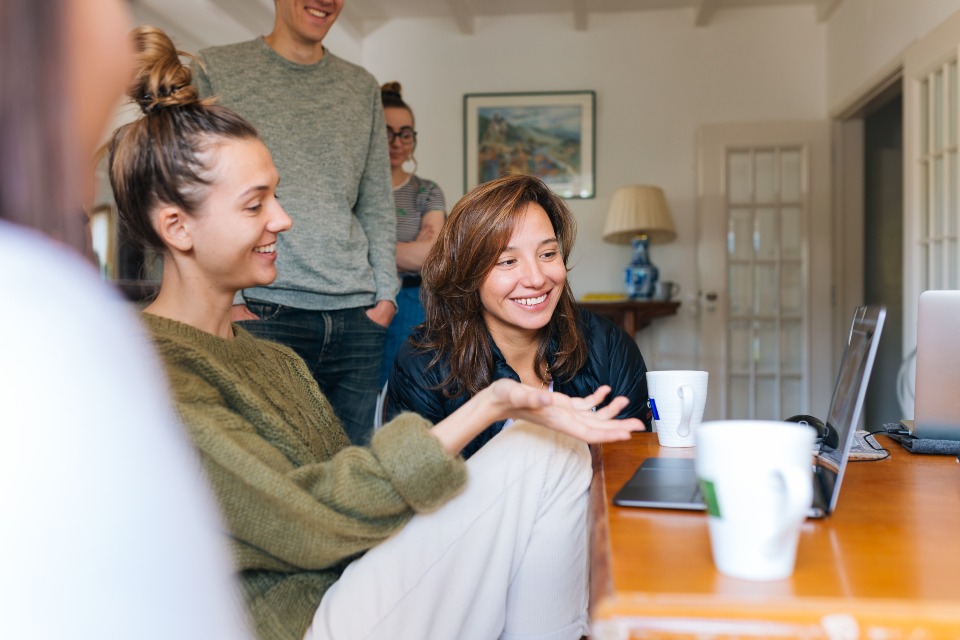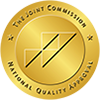Clear Liquor:
- Vodka
- Gin
- Clear Tequila
These ghostly spirits are refined to a higher quality, stripping away much of the impurities and leaving an even smooth and clean taste that won’t put your nerves out. Because they are so transparent and light to taste, see-through liquors like vodka and gin are best for a monstrous variety of cocktails—everything from dainty spritzers to strong, citrus-flavored concoctions. The majority of people consider transparent liquor to be a ‘healthier’ option, especially for social drinking, as it will usually be thought of as less harsh and has fewer added sugars or dyes. Maybe more significantly, clear liquors contain fewer congeners (the chemical substances found in alcohol) so the hangovers could be easier and there could be fewer unpleasantness for some who drink it.
Did you know that 56% of social media users experience FOMO regularly? This “Fear of Missing Out” isn’t just a casual feeling of being left out. It’s a powerful psychological force that can lead to severe mental health issues and addictive behaviors. When people constantly see idealized versions of others’ lives, they often feel inadequate, anxious, and depressed, which can drive them to substance use as a coping mechanism. At 12 South Recovery, we’ve seen firsthand how addressing FOMO as part of a comprehensive treatment approach can significantly affect recovery outcomes. Understanding this connection and learning healthy strategies to combat FOMO could be the key to breaking free from the cycle of addiction.
What Does FOMO Mean?
Fear of Missing Out, commonly known as FOMO, is the pervasive apprehension that others might be having rewarding experiences from which one is absent. This social anxiety is characterized by a desire to stay continually connected with what others are doing. While FOMO has always existed in some form, social media has dramatically amplified this phenomenon, making it a significant mental health concern in our digital age.
FOMO manifests as a deep-seated worry that you miss exciting opportunities, social events, or life experiences. It’s that nagging feeling when you see friends posting about a party you couldn’t attend or colleagues sharing accomplishments that make your life seem mundane by comparison. This constant comparison can create a persistent background anxiety that affects your mood, self-esteem, and overall mental well-being.
The Psychology Behind FOMO
At its core, FOMO is linked to several fundamental psychological principles. Our brains are wired to seek social connection and status, making us naturally sensitive to potential exclusion. From an evolutionary perspective, being excluded from the tribe could mean decreased chances of survival, which explains why social exclusion triggers such powerful emotional responses.
Several key psychological factors contribute to FOMO:
- Social comparison theory: We naturally evaluate ourselves by comparing our experiences to others
- Scarcity mindset: The perception that opportunities are limited and we must seize them all
- Belongingness needs: Our fundamental desire to be accepted and included
- Self-determination theory: Our intrinsic needs for autonomy, competence, and relatedness
When these natural tendencies meet the constant stream of curated highlights from others’ lives on social media, it creates a perfect psychological storm that can leave many people feeling inadequate and anxious.
The Digital Amplification of FOMO
Social media platforms have revolutionized how we connect and created unprecedented opportunities for social comparison. These platforms are designed to showcase life’s highlights—vacations, achievements, social gatherings—while the mundane or difficult moments remain primarily private. This creates a skewed perspective where everyone else is living more exciting, successful lives.
Several factors make digital FOMO particularly potent:
- 24/7 accessibility: There’s no break from the constant stream of updates
- Algorithmic curation: Platforms show the most engaging (often envy-inducing) content
- Quantifiable popularity: Likes, shares, and comments create tangible measures of social success
- Filter effects: Edited and enhanced images create unrealistic standards
The smartphones that keep us constantly connected also mean we’re never entirely disconnected from this source of comparison and potential anxiety, creating a cycle that’s difficult to break.
FOMO's Impact on Mental Health
Anxiety and Depression
FOMO can significantly contribute to anxiety and depression. The constant worry about missing out and feeling inadequate compared to others creates a persistent state of anxiety that can be difficult to escape. This chronic anxiety often leads to increased stress levels, sleep disturbances, and difficulty concentrating.
Depression can develop as FOMO erodes self-esteem and life satisfaction. When individuals consistently feel their lives don’t measure up to what they see others experiencing, they may produce negative thought patterns that fuel depression. The highlight reels of social media make it seem like everyone else is happier, more successful, and living more meaningful lives, which can make one’s life seem disappointing by comparison.
Studies have found that higher levels of FOMO correlate with more significant symptoms of both generalized anxiety and depression. The constant comparison and feeling of inadequacy create a negative feedback loop that can be difficult to break without professional intervention.
Low Self-Esteem and Inadequacy
FOMO directly impacts self-perception and self-worth. When people continuously compare themselves to others who appear to have better experiences, achieve more, or enjoy life more fully, they often feel inadequate. This constant upward social comparison rarely leads to positive outcomes for self-esteem.
The problem is compounded by social media presenting highly curated versions of people’s lives. Users generally share their happiest moments, greatest achievements, and most exciting experiences while hiding struggles, failures, and mundane aspects of daily life. This creates an impossible standard for comparison that no real life can match.
Over time, this persistent feeling of not measuring up can deeply erode self-esteem and self-confidence, leading individuals to question their worth and life choices. These feelings of inadequacy can lay the groundwork for developing unhealthy coping mechanisms, including substance use.
Social Media Addiction
FOMO and social media use create a self-reinforcing cycle. The fear of missing out drives increased social media checking, which exposes users to more content that triggers FOMO, leading to even more platform engagement. This cycle can develop into a genuine behavioral addiction with many of the same characteristics as substance addiction:
- Increasing time spent on social media platforms
- Failed attempts to cut back usage
- Withdrawal symptoms when unable to check social media
- Continued use despite harmful consequences to relationships or responsibilities
- Preoccupation with social media when doing other activities
Research has shown that the dopamine release associated with notifications and novel social information creates reward pathways similar to other addictive behaviors. For many people, social media addiction becomes a gateway to other forms of self-medication as they seek to manage the negative emotions generated by excessive comparison.
The Connection Between FOMO and Substance Abuse
FOMO as a Trigger for Substance Use
FOMO can serve as both a direct and indirect trigger for substance use. Directly, FOMO often leads people to situations where substance use is prevalent, such as parties, clubs, or social gatherings where alcohol or drugs are present. The desire to be included and experience what others are experiencing can lead to participation in substance use, even when it doesn’t align with one’s values or goals.
Indirectly, the negative emotions generated by FOMO—anxiety, inadequacy, depression—create psychological distress that many people seek to alleviate through substance use. Alcohol, marijuana, benzodiazepines, and other substances may temporarily reduce these uncomfortable feelings, creating a dangerous association between emotional relief and substance use.
For those already predisposed to addiction through genetic factors, trauma history, or co-occurring mental health conditions, FOMO-induced emotional distress can be a significant factor in initiating or continuing substance use despite negative consequences.
Social Media, FOMO, and Addiction Risk
Research increasingly shows that heavy social media use, which often correlates with high levels of FOMO, is associated with increased substance use, particularly among adolescents and young adults. Several factors contribute to this relationship:
- Normalization: Social media often portrays substance use as usual, fun, and without consequences
- Peer influence: Seeing peers engage in substance use creates pressure to participate
- Emotional regulation: Substances become a way to manage negative emotions created by social comparison
- Escapism: Drugs and alcohol provide a temporary escape from feelings of inadequacy
Studies show that individuals who report higher levels of FOMO are more likely to engage in risky drinking behaviors and other substance use. The correlation is robust for stimulants like cocaine or methamphetamine, which can temporarily boost confidence and energy, qualities that someone with FOMO may feel they’re lacking compared to their peers.
Common Substances Used to Cope with FOMO
Different substances may be used to address specific aspects of FOMO-related emotional distress:
- Alcohol: Often used to reduce social anxiety and inhibition, making it easier to participate in social situations
- Marijuana: May temporarily reduce anxiety and create a sense of contentment with one’s current situation
- Stimulants (cocaine, methamphetamine, Adderall): Can provide energy and confidence to keep up with a perceived fast-paced social life
- Benzodiazepines (Xanax, Valium): Directly reduce anxiety related to social comparison and perceived inadequacy
- Opioids (OxyContin, heroin, fentanyl): Provide emotional numbing and temporary euphoria that can mask feelings of exclusion
Each of these substances offers short-term relief but creates long-term problems as tolerance develops, requiring increasing amounts to achieve the same effect. This pattern can quickly develop into dependence and addiction, creating more problems than the original FOMO it was meant to address.
Breaking Free from FOMO and Addiction
Mindfulness and Present-Moment Awareness
One of the most effective strategies for combating FOMO is developing mindfulness. This means being fully present and engaged with the current moment without judgment. Mindfulness directly counteracts the future-oriented worry that characterizes FOMO by anchoring awareness in the here and now.
Practical mindfulness techniques that help reduce FOMO include:
- Mindful breathing: Taking a few minutes several times a day to focus solely on the sensation of breathing
- Body scan meditations: Systematically noticing physical sensations throughout the body
- Mindful activities: Fully engaging in everyday activities like eating, walking, or showering with complete attention
- Gratitude practices: Actively noticing and appreciating positive aspects of one’s current situation
Research shows that regular mindfulness practice reduces activity in the brain regions associated with rumination and worry while increasing activity in areas related to attention control and emotional regulation. For those struggling with both FOMO and addiction, mindfulness-based relapse prevention (MBRP) combines these principles with traditional relapse prevention techniques to create a powerful approach to maintaining recovery.
Digital Detox and Healthy Social Media Habits
Addressing unhealthy social media use is essential for reducing FOMO and its associated risks for substance use. A complete digital detox, a period of abstinence from social media and non-essential digital technology, can help break the cycle of comparison and provide perspective on how these platforms affect mental health.
After a detox period, developing healthier social media habits can help maintain reduced FOMO:
- Time limits: Setting specific times for checking social media rather than constant monitoring
- App selection: Being selective about which platforms genuinely add value to life
- Curated feeds: Unfollowing or muting accounts that consistently trigger negative emotions
- Notification management: Disabling non-essential notifications to reduce the pull of constant checking
- Phone-free zones: Designating certain times (meals, bedtime) and places (bedroom) as technology-free
These practices don’t require complete abandonment of social media but rather a more intentional approach that minimizes its potential negative impact on mental health and addiction recovery.
Building Authentic Connections
The most potent antidote to FOMO is developing deep, authentic relationships that provide genuine connection rather than surface-level social comparison. Quality connections with others who accept and support the real you, including your struggles and imperfections, create a sense of belonging that diminishes the power of FOMO.
In recovery from addiction, this often means:
- Participating in support groups: Connecting with others who understand addiction challenges
- Family therapy: Rebuilding and strengthening family relationships damaged by addiction
- Developing sober social networks: Creating friendships based on shared interests rather than substance use
- Volunteer work: Finding meaning through helping others rather than social status or experiences
- Authentic self-expression: Learning to share genuine thoughts and feelings rather than presenting a curated image
These connections provide emotional support, reduce isolation, and create a sense of community, making the highlight reels of social media less alluring and impactful.
How to Get Over Fomo
Getting over FOMO starts with shifting your focus from what you think you’re missing to what you already have. It’s easy to feel left out in a world constantly showcasing highlight reels on social media, but taking breaks from those platforms can help you reconnect with what truly matters. Spend time with people who uplift you, engage in activities you enjoy, and remind yourself that your path is your own. Practicing gratitude, setting personal goals, and being present in the moment can go a long way in easing that fear. Letting go of FOMO is about embracing what makes your life meaningful right now.
Finding Freedom from FOMO and Addiction
FOMO may be a shared experience in our digital age, but it doesn’t have to control your life or drive unhealthy behaviors. By understanding the psychology behind FOMO, recognizing its impact on mental health and addiction, and implementing strategies to build a more present-focused, authentic life, you can break free from both FOMO and the substance use it may trigger.
At 12 South Recovery, we’re committed to helping individuals address the complex factors that contribute to addiction, including the powerful influence of FOMO. Our personalized approach treats the whole person, not just their substance use. This creates a foundation for lasting recovery and improved mental health.
Call 12 South Recovery!
If you or someone you love is struggling with addiction related to FOMO or other underlying issues, we’re here to help. Contact 12 South Recovery Today to learn more about our treatment programs and take the first step toward a healthier relationship with the digital and real worlds.
Frequently Asked Questions
FOMO stands for Fear of Missing Out. It describes the anxiety or worry that others are having rewarding experiences without you.
FOMO is not classified as a mental illness, but it can negatively impact mental health by contributing to anxiety, stress, and low self-esteem—especially when intensified by social media.
The root cause of FOMO often lies in insecurity, comparison, and a desire for social belonging. Seeing others seemingly enjoy life more can trigger feelings of inadequacy or exclusion.
FOMO can be a symptom of underlying emotional challenges like low self-worth, social anxiety, or dissatisfaction with one’s current life or choices.
Common FOMO triggers include social media, peer pressure, major life changes, or simply seeing others engage in events, travel, or experiences you’re not part of.






































